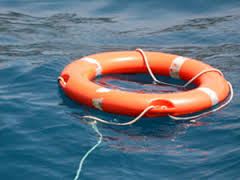Legal & Safety Blog
Unintentional Drowning
Over Memorial Day weekend, millions of people will head to beaches, lakes, rivers and pools to celebrate the official start of summer. But along with the sun and fun, comes a very serious risk of drowning.
According to the CDC, about 11 people die every day due to unintentional drowning. Approximately 2 of the 11 daily drowning deaths are children under the age of 14. For every child who dies from drowning there are 5 who receive Emergency Room treatment for nonfatal near-drowning injuries. These nonfatal drowning injuries can cause severe brain damage that may result in long-term disabilities such as memory problems, learning disabilities, and permanent loss of basic functioning.
If you and your family are going to be around water this holiday weekend, please take a minute to review the following drowning risk factors and prevention tips as outlined by the Centers for Disease Control and Prevention (CDC).
Who is at risk?
Males – an alarming 80% of drowning victims are males.
Children – children ages 1 to 4 have the highest drowning rate and drown most frequently in backyard pools.
Minorities – African American children age 5 to 19 drown in swimming pools at a rate 5.5 times higher than white children of the same age group.
Risk factors:
Lack of swimming ability – many people of all ages and ethnicities report they cannot swim or they are not ‘strong’ swimmers. Formal swimming lessons can greatly reduce the risk, especially in young children.
Lack of barriers – pools should be surrounded by a 4-foot tall, 4-sided barrier fence which ensures the pool is separated from the house and yard. This configuration reduces a child’s chance of drowning by 83% compared to a 3-sided configuration.
Lack of close supervision – drownings can happen quickly and quietly anywhere there is water (pools, natural water settings, bathtubs and buckets).
Location – while younger children ages 1 to 4 are most likely to drown in pools, people 15 years or older are more likely to drown in natural water settings, such as lakes, rivers and oceans.
Failure to wear a life jacket – it is no coincidence that 88% of all boating fatalities involve persons who were not wearing life jackets.
Alcohol Use – among adolescents and adults, alcohol was involved in 70% of deaths associated with water recreation.
Seizure Disorder – for people with seizure disorders, bathtubs are the most common site of unintentional drownings. People with known seizure disorders should avoid taking baths.
Prevention 101:
- Swimming lessons help immensely.
- Seconds Count – learn Cardio Pulmonary Resuscitation (CPR) and be prepared to perform it. Acting quickly can save lives and improve outcomes.
- Lifejackets save lives – use only U. S. Coast Guard approved floatation devices. Do not use inflatable pool toys, such as water wings, inner tubes or pool noodles as a floatation device.
- Provide close supervision – designate a responsible adult to watch children in and around water. This person should be within an arms-reach and not be distracted by outside influences.
- Use a Buddy system – never go out alone, always swim with a buddy.
- Avoid alcohol – do not drink alcohol before swimming, boating, water recreation activities or while supervising children in/around water.
- Know the local weather conditions and forecast – avoid swimming or any water recreation when strong winds or lightening are in the area.
If you have a swimming pool at your home:
- Install a four-sided fence that completely separates the pool are from the house and the yard. The fence should be at least 4 feet tall and have a self-closing gate. Consider additional barriers, such as automatic door locks and alarms.
- Clear the pool and deck of toys, so young kids are not tempted to enter the pool area unsupervised.
If you are in or around natural water settings:
- Use only U.S. Coast Guard approved life jackets.
- Know the meaning of and obey warnings represented by colored beach flags.
- Watch for dangerous waves and signs for rip currents.
- If you are caught in a rip current, swim parallel to shore.
Matt Casey and Matt Devoti wish everyone a happy and safe Memorial Day.
Casey & Devoti is a St. Louis-based personal injury law firm. Together Matt Casey and Matt Devoti have nearly 40 years of trail experience. They handle a variety of personal injury matters, including: car, truck and train accidents, medical malpractice and birth injuries, product liability, slips/trips/falls, elder care and sexual abuse, Workers’ Compensation, and wrongful death. If you or a loved one has been injured by the negligence of another, please contact our office for a free, no-obligation consultation: (314) 421-0763.








